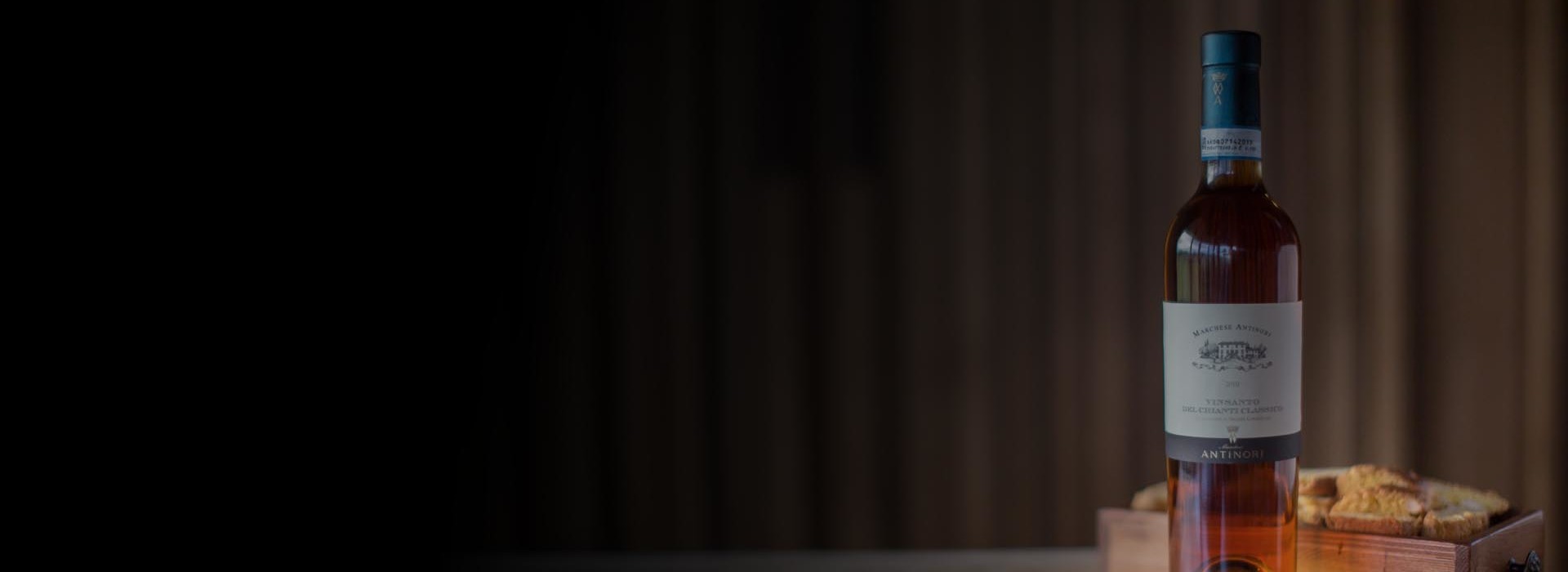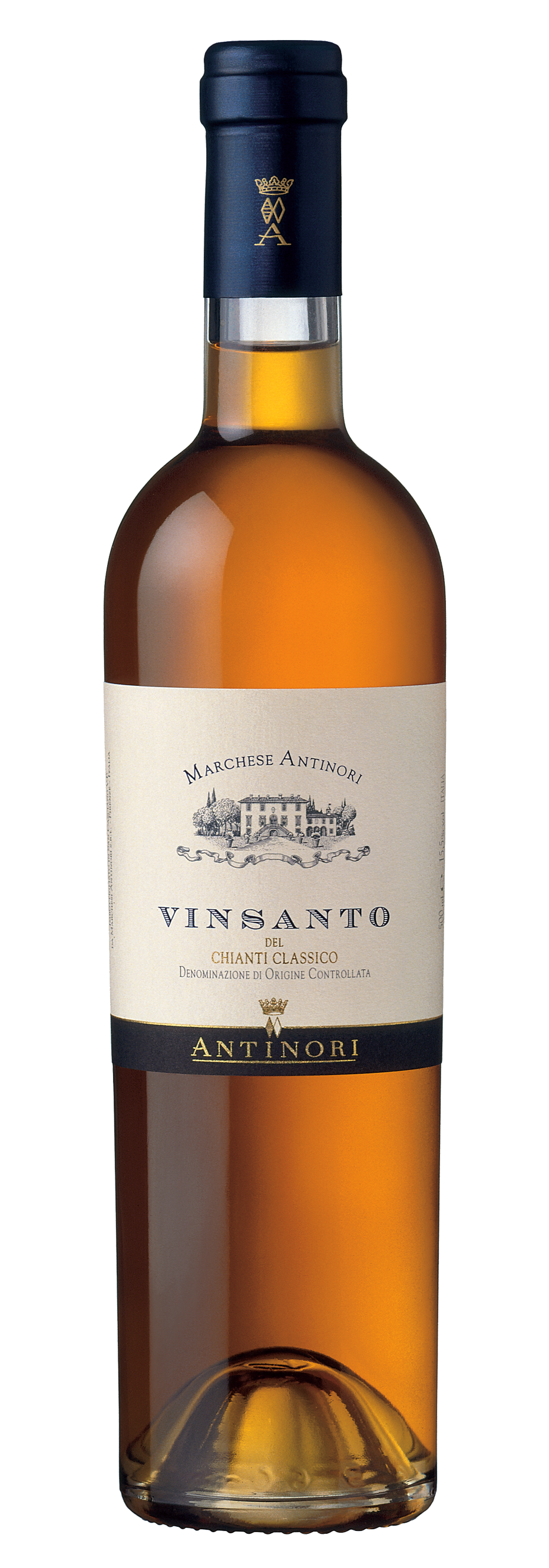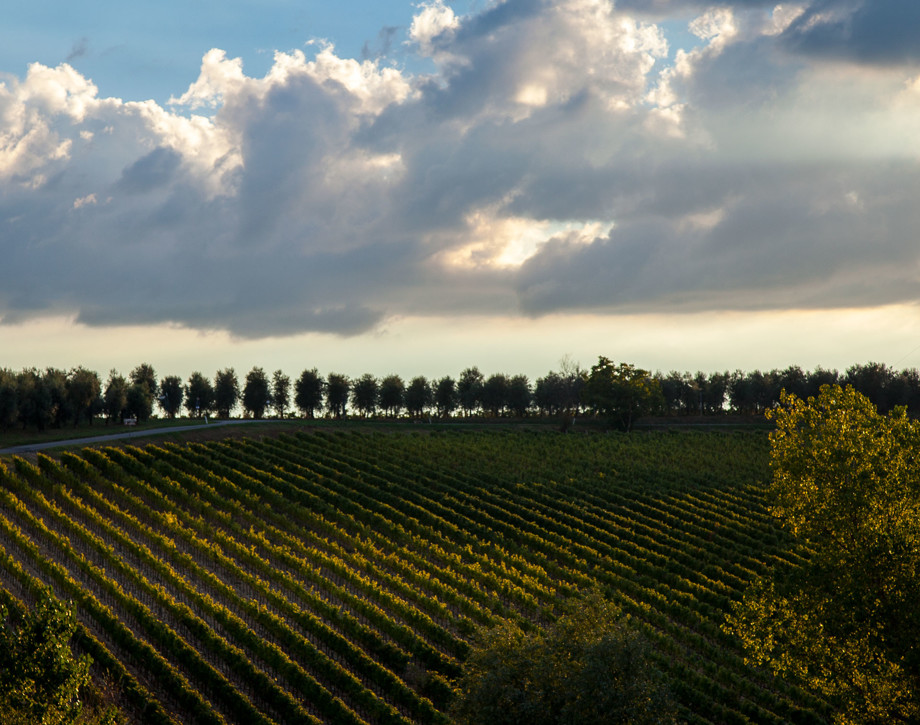Vinsanto Marchese Antinori

Climate
The early climate of the 2013 vintage, characterized by frequent rainfall during the winter months and lower than average temperatures during the spring, led to a ten to fifteen day delay in bud break compared to a normal season. A warm mid-July accelerated the ripening of the grapes, which then proceeded well during the rest of the summer. The climate of the month of September, thanks to much warmth and excellent temperature swings from daytime heat to evening and nighttime coolness, produced an optimal ripening of both the Trebbiano and the Malvasia crop, both picked between the 10th and 20th of the month.
Vinification
The grapes, sourced exclusively from various Antinori proprietary estates in Chianti Classico, were selected and picked into small packing cases. They were then placed manually on straw mats in the drying facility of the Tignanello estate and left to dry and raisin until December. At the end of this period of natural drying, the grapes were given a delicate pressing to best conserve all their flavor and aroma and the must went into small barrels of different sizes, from 13 to 52 gallons and coopered from various types of wood. There a long, slow, and often interrupted fermentation took place. The wine aged in barrel for three years and the various barrels were then blended and bottled.
Historical data
The production of Vinsanto in Tuscany goes all the way back to the Middle Ages and the wine is considered a true regional specialty; the Antinori family has always produced it. The first vintage of the Vinsanto Tenute Marchese Antinori (a “natural” Vinsanto, not a fortified wine with alcohol added) was the 1987.
Tasting Notes
A deep amber in color with golden highlights, the wine shows sweet aromas of walnuts and hazelnuts, chestnuts along with honey with subtle notes of citrus fruit in the background. The flavor are full, honeyed and is well supported by a vigorous and tonic acidity.

Vinsanto
Vinsanto production in Tuscany and in the Chianti Classico region dates back to the Middle Ages. Observing traditional methods and strict production regulations, Vinsanto Tenute Marchese Antinori is produced from selected Trebbiano and Malvasia grapes that are left to dry in a completely natural process requiring time and patience. The resulting wine is intense and pleasing for its generous aromas and soft palate.

Climate
The early climate of the 2013 vintage, characterized by frequent rainfall during the winter months and lower than average temperatures during the spring, led to a ten to fifteen day delay in bud break compared to a normal season. A warm mid-July accelerated the ripening of the grapes, which then proceeded well during the rest of the summer. The climate of the month of September, thanks to much warmth and excellent temperature swings from daytime heat to evening and nighttime coolness, produced an optimal ripening of both the Trebbiano and the Malvasia crop, both picked between the 10th and 20th of the month.
Vinification
The grapes, sourced exclusively from various Antinori proprietary estates in Chianti Classico, were selected and picked into small packing cases. They were then placed manually on straw mats in the drying facility of the Tignanello estate and left to dry and raisin until December. At the end of this period of natural drying, the grapes were given a delicate pressing to best conserve all their flavor and aroma and the must went into small barrels of different sizes, from 13 to 52 gallons and coopered from various types of wood. There a long, slow, and often interrupted fermentation took place. The wine aged in barrel for three years and the various barrels were then blended and bottled.
Historical data
The production of Vinsanto in Tuscany goes all the way back to the Middle Ages and the wine is considered a true regional specialty; the Antinori family has always produced it. The first vintage of the Vinsanto Tenute Marchese Antinori (a “natural” Vinsanto, not a fortified wine with alcohol added) was the 1987.
Tasting Notes
A deep amber in color with golden highlights, the wine shows sweet aromas of walnuts and hazelnuts, chestnuts along with honey with subtle notes of citrus fruit in the background. The flavor are full, honeyed and is well supported by a vigorous and tonic acidity.

The Specialties Of The Chianti Region
Chianti Classico is the heart of Tuscany not only from a geographical perspective but also due to its historical and cultural importance, its traditions and for its strikingly beautiful territory. Chianti Classico is home to Marchesi Antinori’s historic estates, a family of winemakers since 1385 who have always been passionate about their ancestral territory. The specialty products produced by Antinori, brandy, grappa, Vinsanto, extra virgin olive oil and vinegar, are all remarkable tributes to Chianti Classico’s rich, generous countryside and its authentic production perfected through centuries of agricultural and viticultural traditions.


















